|
|
Period:
Yugoslav Wars
Region:
Bosnia
The Croatian and Muslim Crime in Čardak - Bosnia 1992
The crime in Čardak refers to the ethnic cleansing of Serbs performed by Croatian paramilitary units under the auspices of the regular Army of Croatia on the Orthodox Easter, 26th of April 1992, in the village of Čardak, the town of Derventa, at the north of Bosnia and Herzegovina.
The crime was carefully prepared in which the civil authorities of the so-called Crisis Headquarter of the Derventa municipality were involved, showing the genocidal intentions of Bosnian Croats in this area but of the regime in Croatia as well, who knew about these criminal actions.
When the attack on Čardak occurred at the end of April, at least 39 Serbs civilians were killed, and dozens were taken to the camp complex in Derventa which had five locations and in which nobody survived. All detainees were killed in monstrous ways. The youngest victims were only 15, and the oldest 75 years old.
The series of crimes in Čardak and surrounding lasted by the beginning of July when the Serbian Army in Bosnia and Herzegovina initiated the liberation of Bosanska Posavina within the action of “Corridor of Life.”
Few perpetrators were tried for these crimes. The Persecutor’s Office of Bosnia and Herzegovina obstructs the investigation in the case of Čardak, while the Hague Tribunal refused to process the crimes committed against Serbs in Čardak under the pretext of insufficient evidence.
Although the abundant documentation about the crimes in Čardak has been made and submitted to the investigation authorities of Bosnia in the period between 2002 and 2010, with the list of at least 250 identified victims, only four perpetrators were processed, with minimal punishments as if those were car accidents and not the war crimes. The final verdicts were a mockery of justice.
BACKGROUND
SFR Yugoslavia was a federal state made up of 6 republics (FR Slovenia, FR Croatia, SR Bosnia, and Herzegovina, SR Montenegro, SR Serbia, and SR Macedonia). Both Yugoslavia and the JNA were established on the principle of “brotherhood and unity” of all peoples and nationalities who lived in the SFRY.
The social and economic system of the SFRY was socialism.
The 1974 Constitution of Yugoslavia brought about the decentralization of the SFRY, which later enabled the separatist forces in Slovenia and Croatia, and later in Bosnia and Herzegovina to begin the dissolution of Yugoslavia, followed by bloody wars and persecution.
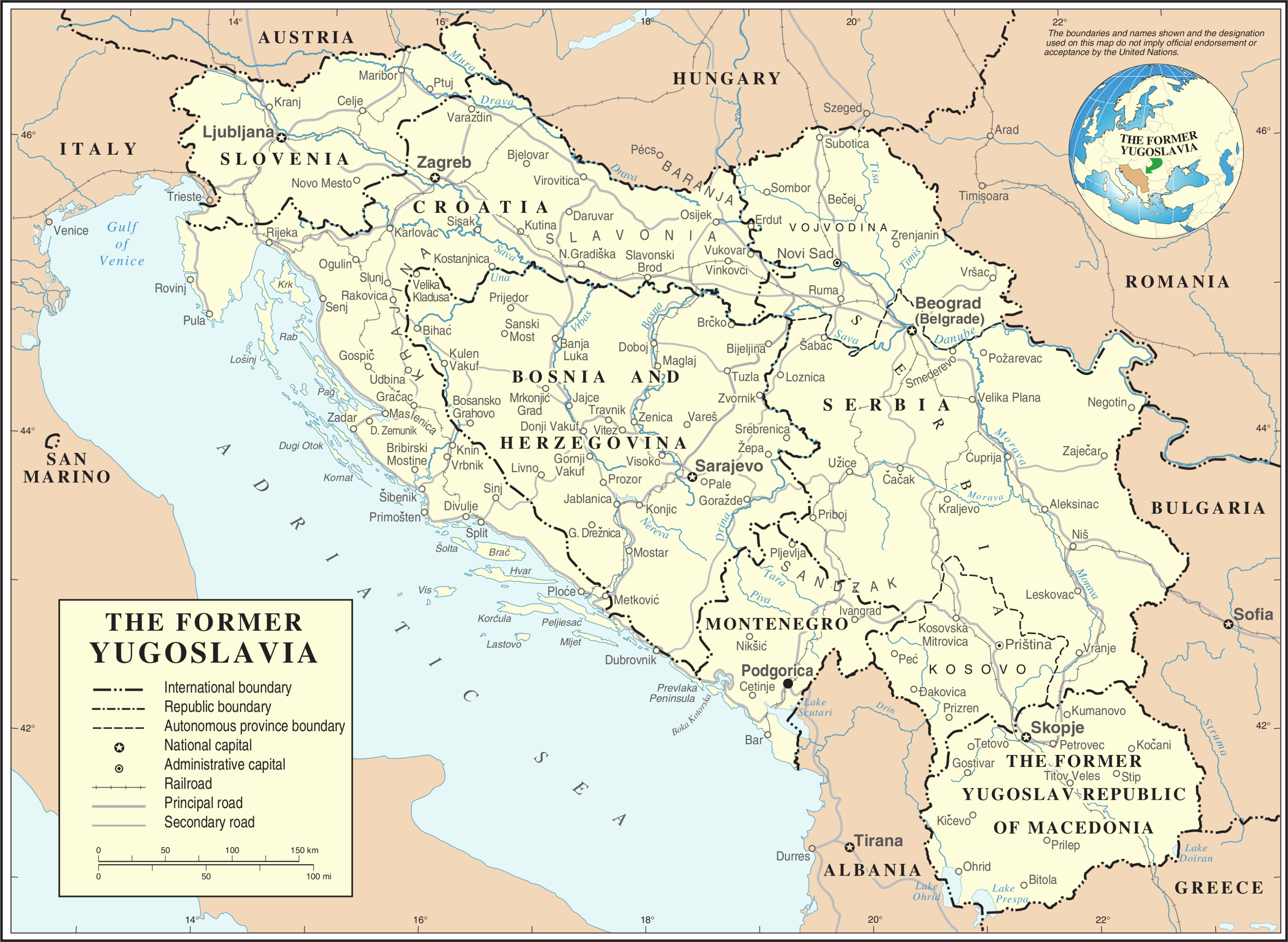
In all the constitutions of Yugoslavia, the Yugoslav People's Army was defined as the only legitimate armed force in the territory of the SFRY, and therefore, the only internationally recognized military entity. At the end of 1989, the SFRY Assembly passed amendments to the Constitution, thus replacing the one-party system with the multiparty system, which meant that besides the Alliance of Communists of Yugoslavia, other parties could now be formed.
At the end of January 1990, the Alliance of Communists of Yugoslavia collapsed, at the 14th SKY Congress in Belgrade, when sharp verbal clashes between Slovenian and Serbian delegates occurred regarding the future of the joint state of the SFRY.
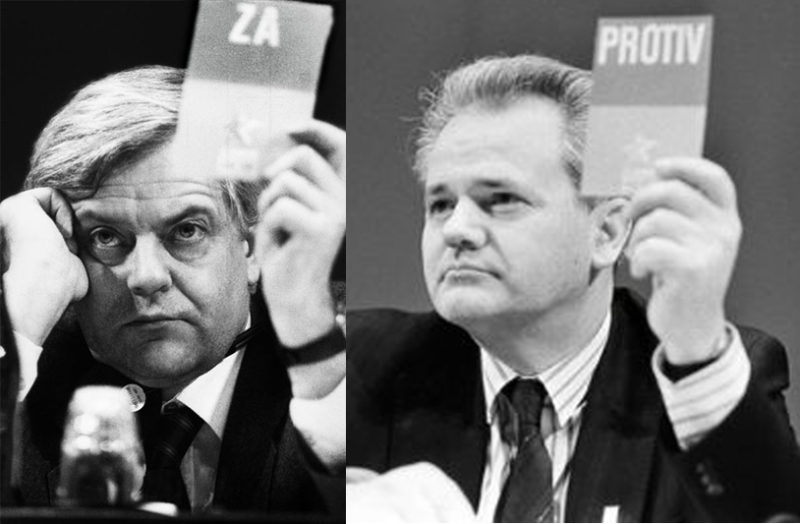
Opposing sides - Kučan and Milosević
The Slovenian delegation left the session, immediately followed by the delegation of the FR Croatia, which brought the issue of the congress into question. After them, the delegations of the FR of Bosnia and Herzegovina and the FR of Macedonia also left the congress.
Thus, after 45 years, the rule of the communists in SFRY ended.
The situation in Bosnia and Herzegovina
Bosnia and Herzegovina has been a central republic within the Socialistic Federal Republic of Yugoslavia, where Muslims, Serbs, Croats, and national minorities lived. On 18 November 1990, a multiparty election took place, the first after World War 2. The government was formed by the anti-communist parties- SDA, SDS, and HDZ. MP that won the highest number of votes (47,4%) was Muslim Fikret Abdić, a businessman from Velika Kladuša.
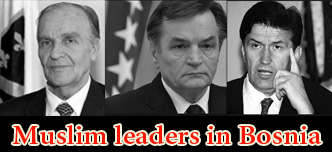
Alija Izetbegović, Ejup Ganić, and Haris Silajdžić
However, he was under pressure by Muslim extremists to step aside since he was against the war and conflicts with Serbs. As it turned out, he only served as bait for Muslim voters.
Alija Izetbegović, a pre-war criminal and author of the notorious chauvinistic “Islamic Declaration” became president of the presidency of B&H. Momčilo Krajišnik, a member of the Serbian party (SDS) became president of the Parliament, while a Croat Jure Prelivan was appointed to the prime minister of the Federal Republic of Bosnia and Herzegovina. The coalition ruled for 15 months. It collapsed at the beginning of the conflicts in Bosnia in April 1992.
Leaders of Muslim Party of Democratic Action- Alija Izetbegović, Ejup Ganić, Haris Silajdžić, and others, advocated the independence of Bosnia and Herzegovina from Yugoslavia as early as 1991. Muslim SDA and Croatian HDZ shared a goal of an ethnically and religiously cleansed state. However, Bosnian Croats wanted integration with Croatia, while Muslims wanted to create an Islamic state.

Izetbegović participated in WW II in notorious Bosnian Muslim 13th Waffen
Mountain Division of the SS Handschar (1st Croatian) member,
known for the WW II genocide of Serbs
The Bosnian independence propaganda was spread by the media and press. As early as October 1991, the press in Sarajevo published open threats directed towards Serbian people. Among everything else, it was announced that the notorious Hadschar Division, Ustasha unit that committed horrible crimes against Serbs in the Independent State of Croatia (NDH) during 1941-1944, would be re-established. This unit had been mostly filled with Muslims. Ustasha crimes in NDH reached their peak in Bosnia itself with Prebilovci, Drakulić, Bileća, Gacko, Donja Gradina, Kupres as the most suffering places.
August 1995 witnessed organized arming of paramilitary forces of Muslims and Croats in Bosnia and Herzegovina through channels of the parties SDA and HDZ, intending to attack the Yugoslav People's Army (JNA). In October 1991, local committees of paramilitary units "Green Berets" and "Patriotic League" were established. In the second half of 1991, Mostar was full of members of the JNA, who came from Croatia (Dalmatia and Dubrovnik area), from where they were expelled or withdrawn. They further withdrew in Užice (Serbia) at the end of March 1992.
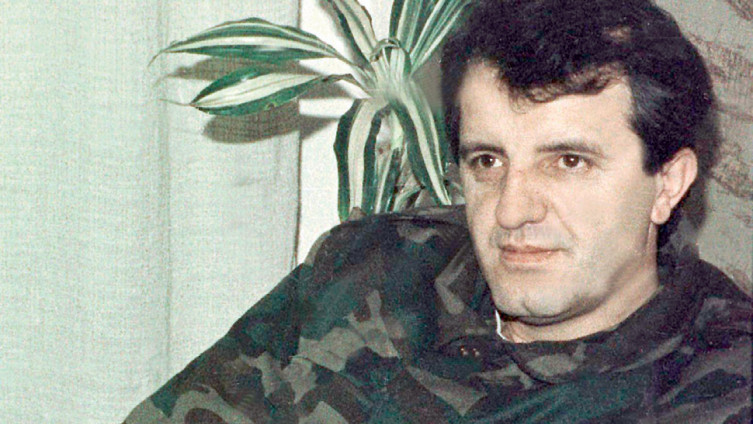
Sefer Halilović - founder of Bosnian Muslim paramilitary forces
On March 1, 1992 a referendum on the separation of Bosnia and Herzegovina from Yugoslavia was organized with 62.4% of voters having voted for independence. A day later in Sarajevo, members of the "Green Berets", led by a criminal Ramiz Delalić aka Ćelo started shoting at a Serbian wedding party at Baščaršija having killed the groom's father Nikola Gardović and wounded priest Radenko Miković.
This was an event that announced the bloody war in Bosnia-Herzegovina in the 1990s, but this also served as cause to dissolve still nationally-mixed police in Sarajevo. After that, numerous attacks on Serbian positions in Bosnia and Herzegovina and on members of the JNA occured (Sijekovac, Kupres, Sarajevo, Tuzla...). International representatives remained silent to these events.
THE SITUATION IN DERVENTA
Derventa is a place several centuries-old, located in the north of Bosnia in the central part of the Posavina region. The river Ukrina passes through the place.
Before Osmanli Turks occupied this region, Derventa had an Orthodox monastery built by Serbian king Dragutin of the Nemanjići Dynasty. Turks destroyed it in 1458 on their way to conquer Vienna.
Derventa witnessed the rebellion of Serbs in March 1834 against Turkish authorities which imposed great taxes on them and generally tormented Orthodox people in every possible way. Only in July 1878 did Bosnia and Herzegovina become part of the Habsburg Monarchy by the agreement on the Berlin Congress, yet, they kept terrorizing Orthodox Serbs as Turks did before. According to the census of 1879, Derventa had 40,000 residents. Due to its good geographical position, Derventa became a trade and educational center by the end of the 19th century. In 1912, the newspaper Derventski list appeared.

The river Ukrina near Derventa
By the beginning of the Great War, Austohungarian authorities enhanced terror against Serbs from this region, and took to the camps many of them. After the breakthrough of the Salonika front, Serbian Army liberated this region in November 1918. During the Kingdom of Yugoslavia, Derventa became part of the Savska Banate and continued to develop. On the eve of the Second World War, Derventa had 70,000 residents with Orthodox Serbs as the majority ethnic group.
The time of peace lasted short because Germany, Italy, Albania, Bulgaria, and Hungary invaded the Kingdom of Yugoslavia which soon resulted in the creation of the Ustasha’s Independent State of Croatia (NDH) with Ante Pavelić and Aloysius Stepinac as its political and spiritual leaders. Serbs from Derventa faced massive slaughter by Ustashas at fields, forests, markets, or the detention in the Jasenovac and Donja Gradina camps. Only 15% of the prewar population survived, and Serbs became the national minority in the city.
After 1945, the new communist authorities of Yugoslavia banned the public discussion regarding the crimes against Serbs. Socialism brought progress to Derventa because the industry developed and the textile state-owned company “Ukrina” was founded and employed a lot of workers. The end of the 1980s witnessed the transformation of Yugoslavia’s social and political system and new political parties were formed in Derventa.
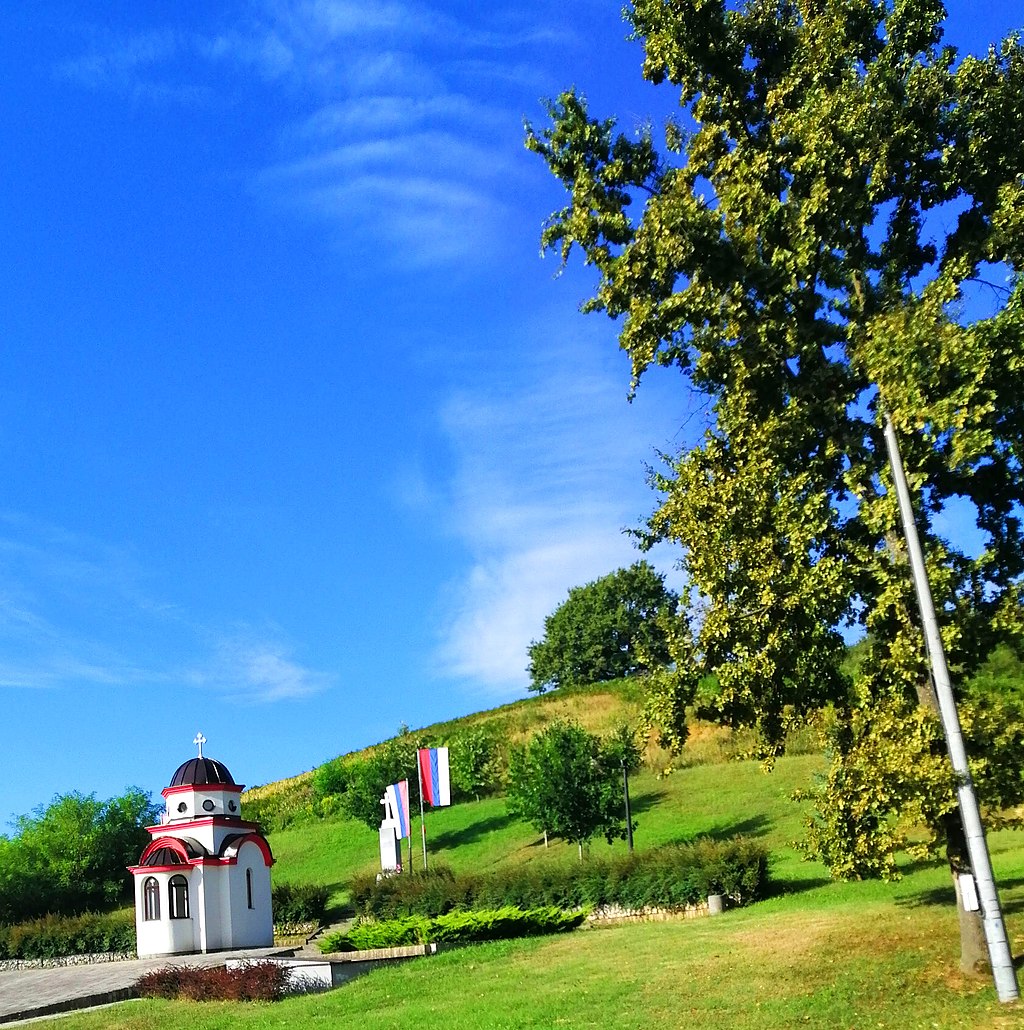
The memorial area Čardak
According to the census in 1991, Derventa had 18,000 residents, 43% of Serbs, 24% of Croats, and 30% of Muslims.
THE ATTACK
At the end of March 1992, the Army of the Republic of Croatia started aggression on the northern part of Bosnia and Herzegovina in the region of Bosanski Brod. Local Croatian forces, the so-called Croatian Defense Council (HVO), the so-called Croatian Liberation Army (HOS), Muslim Patriotic League, and Muslim Green Berets assisted in cleaning the Posavina region from Serbs.
Before this attack on Čardak, Croatian-Muslim forces conquered the surrounding village Kostreš in nearby Derventa on 4 April 1992.
The following Croatian forces were involved in this aggression:
- the 128th Rijeka’s Brigade of the Army of the Republic of Croatia
- the 102nd Sisak’s Brigade of the Army of the Republic of Croatia
- the 103rd Derventa’s Brigade of the Croatian Defense Council
The operation was led by colonel Mladen Kruljac, commander of the special unit - the Third Guardian Brigade “Kune” of the Army of the Republic of Croatia.
The area around Čardak suffered extreme aggression for several days which reached its peak on Holy Saturday, 25th April, and Orthodox Easter when defenders of Derventa got tired after JNA had failed to send them help. This decisive attack started from the village of Kostur.
Defenders of Čardak suffered great casualties when Croatian-Muslim forces entered the place. Only a small number of them managed to reach the units of the Army of Yugoslavia crossing the river Ukrina, and survived.
When Čardak was seized, one of the Croatian soldiers wrote on a house “Čardak is dead” revealing the true purpose of the occupation.
NAMES OF THE VICTIMS
The victims that didn’t survive aggression in Čardak were:
-
Milojko Popović, born in 1955 in the village of Cerane near Derventa.
-
Gavro Petković, a teacher born in the village of Kalenderovci. Killed while trying to escape from Čardak.
-
Mirko Đurišić, shot to death in Čardak.
-
Sreten Plavšić, shot to death in Čardak.
-
Blagoje Đuraš, born in 1952; taken to the camp in the JNA hall, where he was killed by notorious Azra Alešević-Bašić.
-
Savo Živković, born in 1946; killed in his house.
-
Jelena Živković, born in 1944; killed in her house.
-
Goran Živković, born in 1977; killed in his house.
-
Veljko Lazarević, born in 1947; slaughtered in his house.
-
Mirjana Lazarević, born in 1950; slaughtered in her house.
-
Duško Lazarević, born in 1971; slaughtered in his house.
-
Radojka Knežević, born in 1977; raped and killed.
-
Danica Čudić, born in 1954; tortured and killed.
-
Čedo Čudić, born in 1952; tortured and killed.
-
Dragana Nikolić, born in 1976; raped and killed.
-
Milanka Blagojević, born in 1952; raped and killed.
-
Ružica Savić, born in 1972; raped and killed.
-
Ranko Đuraš, born in 1922; killed in his house.
-
Vidosava Cvijetković, born in 1917; slaughtered in her house.
-
Pantelija Popović, born in 1921; slaughtered in her house.
-
Boris Stjepanović, born in 1932; slaughtered in his house.
-
Simeun Simikić, born in 1927; killed in his house.
-
Marina Knežević, born in 1967; raped and killed.
-
Mirko Pajić, captured in Čardak and killed in the camp because he passed a note to an observer of the International Red Cross where he described the actual conditions in the camp.
AFTERMATH
The occupation of Derventa involved gruesome acts such as the destruction of the Orthodox Church of Dormition of Mother of God built in 1885. Hundreds of Derventa’s Serbs ended in concentration camps of whom rare survived. They were mostly killed by cold weapons. A lot of women and girls were raped many times.
Under command of general Momir Talić, commander of the 1st Krajina Corpus, Serbian Army in Bosnia and Herzegovina initiated the liberation of the Posavina region at the beginning of June of 1992. The action was called “The Corridor of Life” and it lasted about one month.
When Derventa was liberated on the 4th of July 1992, the situation normalized, while in December 1992, remainings of around twenty Serbs, who were killed on Orthodox Easter in Čardak were found near the road Derventa-Doboj. Exhumation of the remainings was on 21-23 December 1992 at the location of the mass graves in Modran.
YEARS LATER
Milorad Simić from Derventa gave his land for building the monument devoted to Serbs killed in Čardak in 1992. The memorial church was consecrated by bishop Hrizostom in 2017.
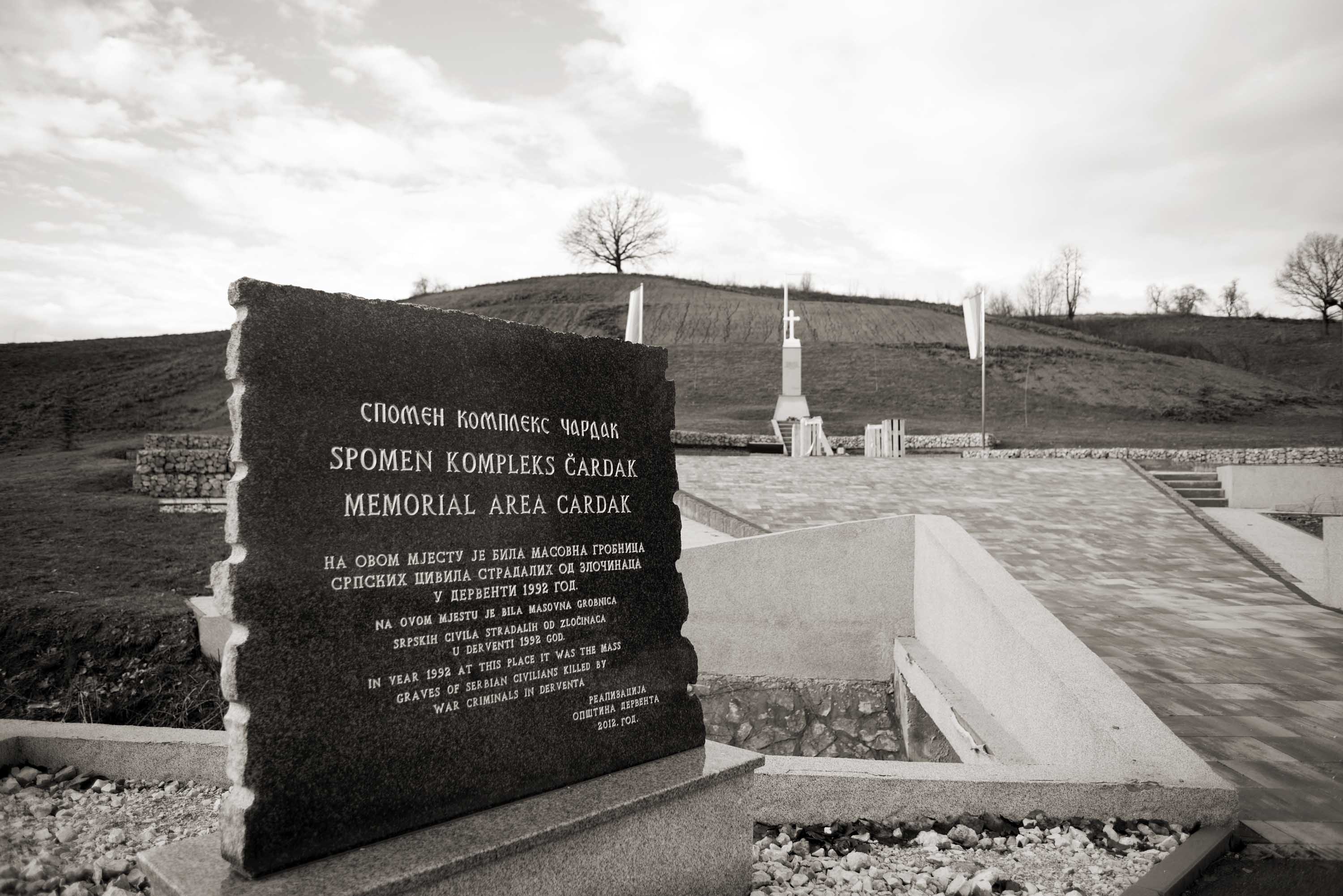
Don't forget crime and criminals
For years, orthodox Serbs from this region have been gathering in the memorial church in Čardak at the end of April. This occasion involves memorial services and prayers for all victims of the war in Bosnia and Herzegovina and related programs. This helps preserve the memory culture among Serbs of the Posavina region.
TRIAL AND VERDICTS
The International Criminal Court for ex-Yugoslavia in Hague has failed to process the war crimes in Čardak that happened from the end of April until the beginning of July in 1992.
The Bosnian Prosecutor continuously obstructs investigation of the crimes that occurred in the war of 1990s. Rare are the cases where perpetrators were arrested and punished appropriately. One of them is Azra Bašić (ex. Alešević) known as Bloody Azra. Among other horrible things, she slaughtered Blagoje Đuraš in the Hall of Yugoslav People’s Army in the centre of Derventa, who was previously brought from Čardak. She was sentenced to 14 years in prison. Before the arrest, she used to hide in the USA for long period and her extradition to Bosnia took place only in 2016.

Bloody Azra
The Bosnian Court sentenced Almaz Nezirović to only two years in prison, although it was proved that he was involved in brutal massacres of Serb civilians as a member of the Military Police of Croatia. Also, he was a guard of the Rabić camp.
Brothers Esad and Derviš Čavalić were sentenced to five, and five and half years in prison, respectively. More than 500 of Derventa’s Serbs, who were detainees of the camps, still wait for condemnation of many other torturers and criminals.
PUBLICATIONS
Not any documentary has been made regarding the crimes in Čardak. Also, there isn’t any information that a book has been written about the sufferings of Serbs from this place, which today is the periphery of the city of Derventa in northern Bosnia. Also, we are still waiting for any public discussion regarding this aggression and crimes.
CONCLUSION
Crimes against Serbs in Derventa is just one segment of the JOINT CRIMINAL ENTERPRISE intended for the extermination of orthodox Serbs by Croatian-Muslim forces at the end of the 20th century.
The Bosnian Prosecutor and the Hague Tribunal have refused to deal with the cases where Serbs were victims and still hinder trials based on the indictments that were submitted to the Bosnian court as early as the beginning of the 21st century. International representatives in Bosnia and Herzegovina are unwilling to participate in the investigation of criminal actions because it would reveal command responsibility. This would disclose the background of the Bosnian war, and the breakup of Yugoslavia in general, for what only Serbs are officially guilty of.
Tags:
Please, vote for this article:
Visited: 4059 point
Number of votes: 10
|